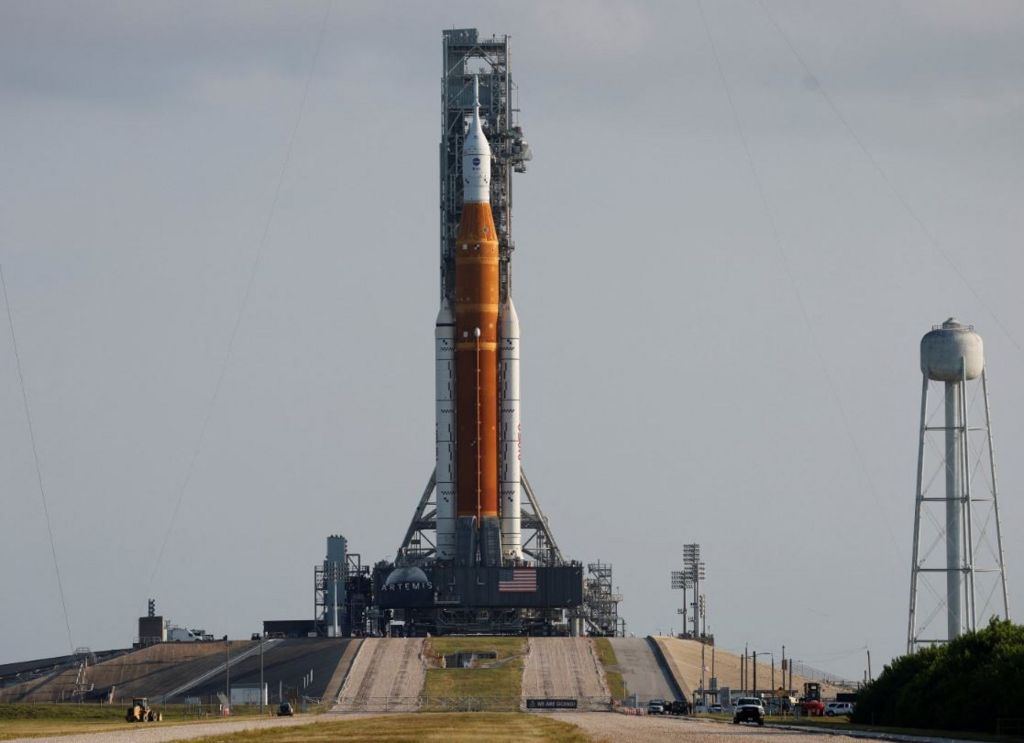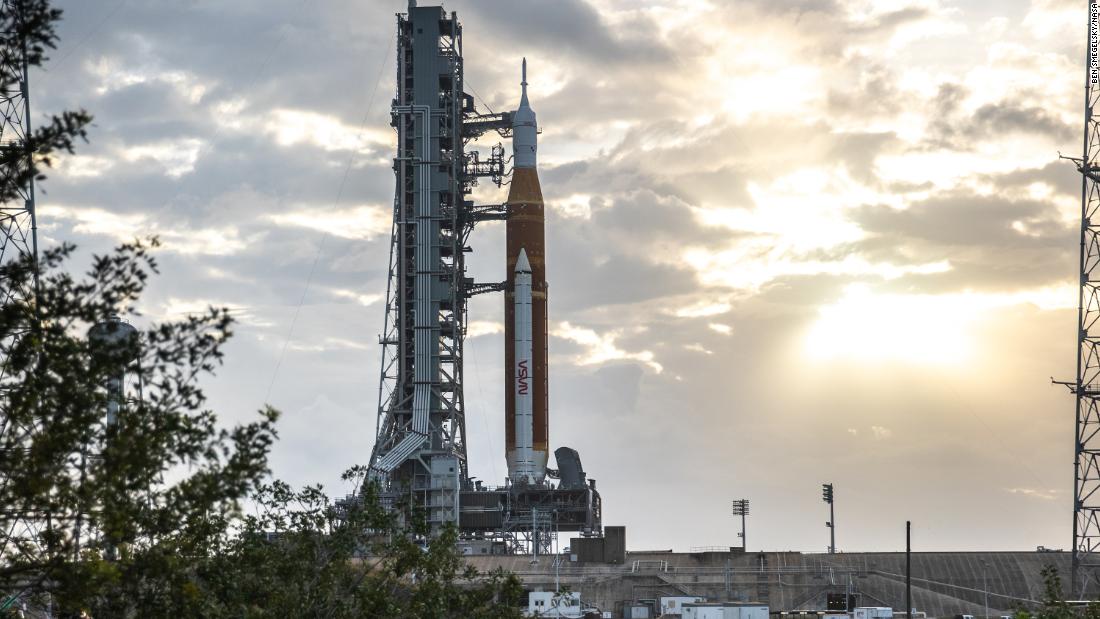The launch of NASA’s powerful new moon rocket on its shakedown mission with three test dummies aboard was postponed Monday morning due to fuel leaks and a suspected crack discovered during final liftoff preparations.
The Space Launch System rocket was being fueled with roughly 1 million gallons of extremely cold hydrogen and oxygen when NASA repeatedly stopped and restarted the process due to a leak as crucial minutes passed. Due to thunderstorms off the Kennedy Space Center in Florida, the fueling was already running nearly an hour behind schedule.
The seepage that was there at a dress rehearsal in the spring was where the leak first occurred. Following that, officials reported a second apparent valve leak. According to NASA officials, the core stage, which is the large orange fuel tank with the four main engines on it, had a crack or other fault discovered later in the morning. Frost had also begun to form around the suspected area. Engineers got to work analyzing the accumulation.
On a mission to launch a crew capsule into lunar orbit, the rocket was prepared to take off. The mission marks a significant turning point in America’s effort to send humans back to the moon for the first time since the Apollo program was terminated 50 years ago. The earliest possible date for the following launch attempt is Friday.
The 98-meter rocket, which outperforms even the Saturn V that launched the Apollo astronauts to the moon, is the most potent NASA has ever produced. The Orion spacecraft atop the Artemis rocket was empty. The six-week mission, which was supposed to culminate with the capsule’s splashdown in the Pacific in October, actually carried three test dummies instead.

The mission, called Artemis after Apollo’s legendary twin sister, will mark the beginning of NASA’s 21st-century moon exploration program. When hydrogen fuel leaks halted countdowns and delayed several flights in 1990, NASA’s space shuttle program experienced challenges similar to those experienced on Monday.
There was also a communication issue concerning the Orion capsule that launch director Charlie Blackwell-Thompson and her crew had to handle. The communication connections between Launch Control and Orion experienced a late-Sunday 11-minute hiccup, which engineers were unable to identify. Before committing to a launch, NASA needed to understand why the issue happened, even though it was resolved by Monday morning.











